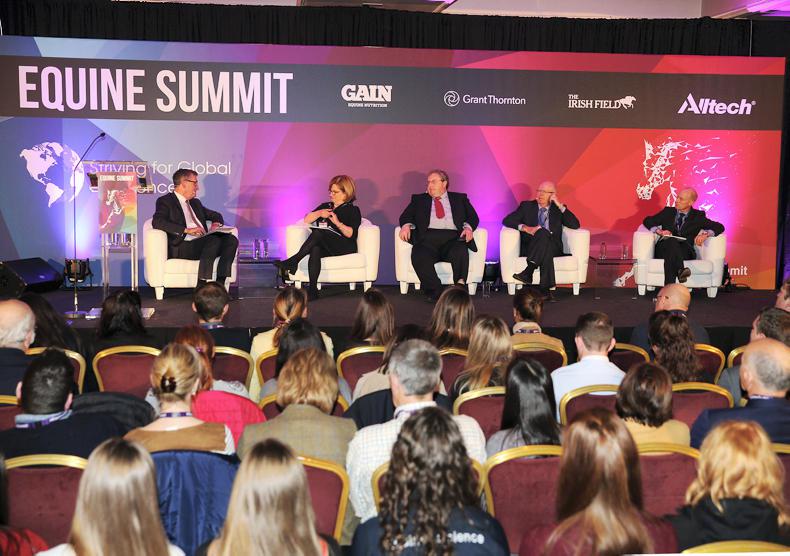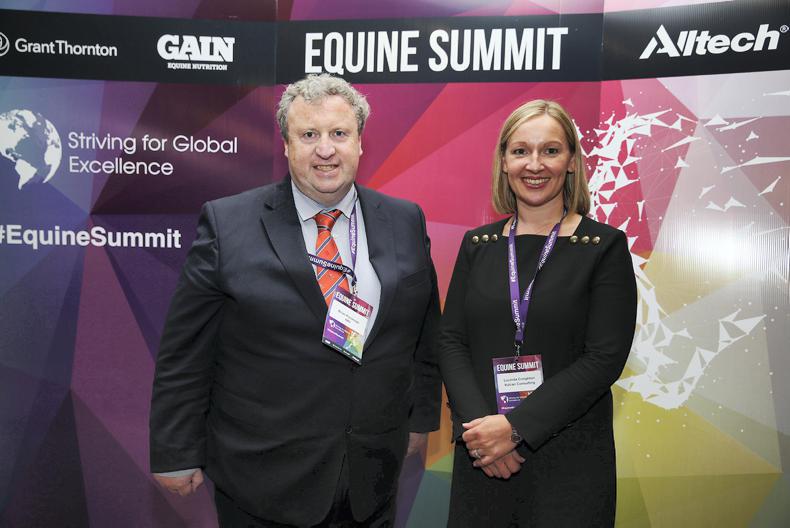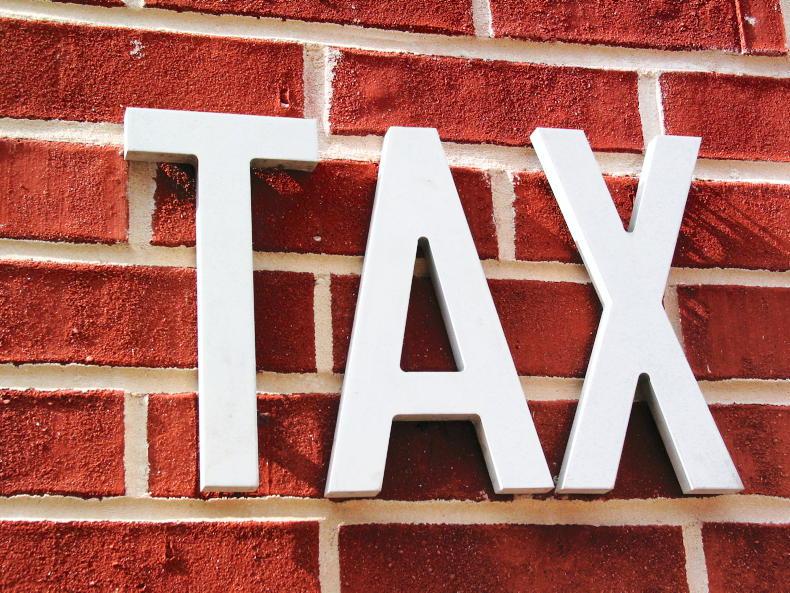SASHA Kerins, partner and Head of Agri Food with Grant Thornton, emphasised how the sport horse and thoroughbred industries must work together and embrace new technologies and changes within the industry in order to retain Ireland’s position as one of the top equestrian nations.
Kerins began by reminding the crowd of Ireland’s past success within the industry. From the Royal Dublin Society hosting the first ‘horse leaping’ competition in 1869, over 200 years of successful breeding and more recently successful training programmes.
Kerins brought the audience into the current economic climate of the industry using a pre-recorded video of economist Jim Power explaining his recent report on current industry statistics.
The report shows the very significant economic and employment contribution made by the equine industry, especially in rural Ireland. The sport horse industry contributes €816 million to the Irish economy and employs over 14,000 people.
reputation
The reputation of the Irish horse is the most positive aspect of the industry, according to Power’s report. The sale of MHS Going Global as one the most expensive show jumping horses ever sold, recent European gold medal success of the Irish senior show jumping team, a gold medal in Lanaken and the ISH studbook being ranked number one in world for eventing all contribute to this reputation.
Despite this success Kerins said: “We need to see our Irish riders preforming on Irish horses, as well as a clear breeding programme.”
The thoroughbred industry contributes €1.84 billion to the economy and as a nation Ireland is known for punching above its weight. However, like the sport horse sector there are challenges facing the industry.
Brexit poses a huge risk as 80% of bloodstock exports go to Britain. The report shows that foal production in both the thoroughbred and sport horse sectors have increased, but it warns that quality must be considered over quantity.
The diverse nature of the industry gives way to it being very fragmented at times and in order to gain maximum attention and funding from the government, the industry has to start presenting a much more united front.
infrastructure
Kerins also expressed concern over the quality of the infrastructure, using the redevelopment of the Curragh Racecourse as an example of Ireland creating a flagship for the industry and she suggested the sport horse sector do something similar.
International show jumper Cameron Hanley later echoed Kerins’ point, adding it would not be possible for him to do his job from Ireland.
“The infrastructure in Ireland could be much better, you are not going to attract the high level riders back,” he said. Arriving in Kildare from Cavan, where the international show is taking place, Hanley added: “Cavan is as good as anywhere but we need more of those show centres.”
Kerins strong argument for an all-inclusive industry approach in order to maximise success gave the audience plenty of food for thought.


 This is a subscriber-only article
This is a subscriber-only article
 It looks like you're browsing in private mode
It looks like you're browsing in private mode










SHARING OPTIONS: